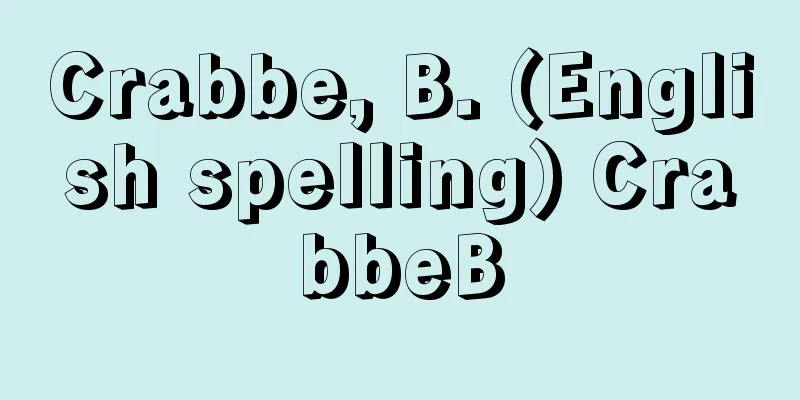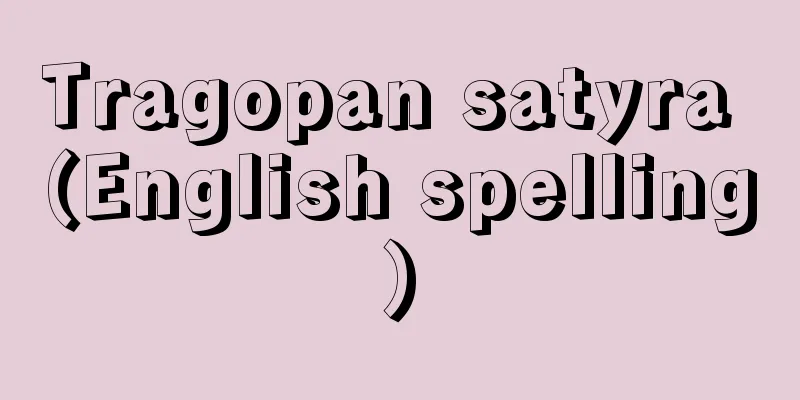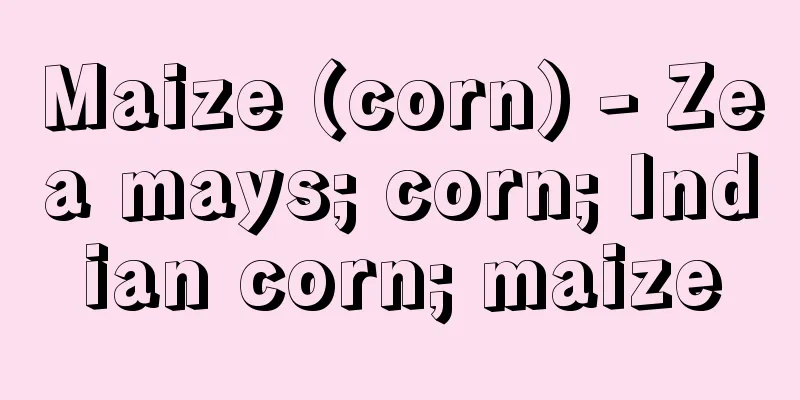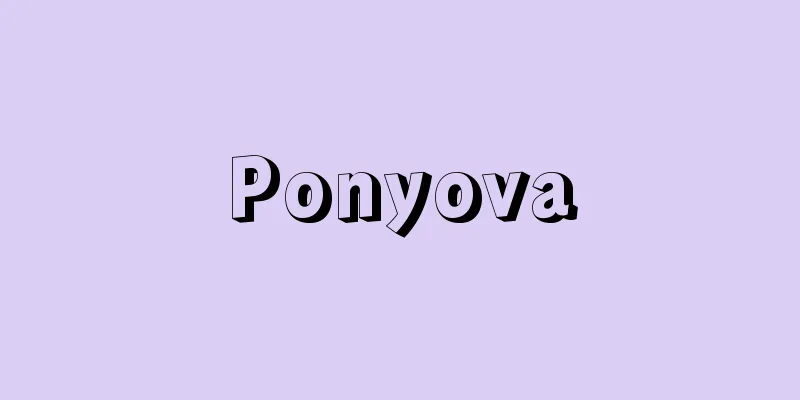Fisheries Adjustment Committee - Gyogyouchoseiinkai

|
It is one of the administrative committees established under the Fisheries Law for the comprehensive use of water surfaces and fisheries adjustment, and is the foundation of fisheries administration. In addition to the marine area fisheries adjustment committee, which is basically established in each prefecture, there are also the joint marine area fisheries adjustment committee and the central fisheries adjustment council. Inland waters are managed by an inland fisheries management committee. The central marine area fisheries adjustment committee is a unique organization that maintains its independence from existing administration and has quasi-administrative and quasi-judicial powers, and is composed mainly of members directly elected by fishermen. In addition, three wide-area fisheries adjustment committees were newly established following a partial revision of the Fisheries Law in 2001. [1] Sea Area Fisheries Adjustment Committees These are established for each sea area designated by the Minister of Agriculture, Forestry and Fisheries, and there are currently 66 of them nationwide (26 of which are for one sea area per prefecture). There are 15 members, including 9 elected representatives of fishermen and fishery workers, 4 academic experts appointed by the governor, and 2 public interest representatives. However, in the case of sea areas designated by the Minister due to their special location, such as remote islands, the number of members is 6, 3 and 1, for a total of 10. The term of office for committee members is four years. The Commission has a wide range of powerful powers regarding fisheries adjustment, as outlined below. (1) It investigates and deliberates on matters such as the establishment of fishing ground plans, approval or rejection of applications for fishing rights licenses, the setting of restrictive conditions for fishing rights, the establishment, amendment, or abolition of prefectural fisheries adjustment regulations, and the setting of total allowable catches (TAC), and submits its opinion to the prefectural governor. (2) It makes rulings on the establishment, change, or extinction of fishing rights. (3) It presents its opinion to the prefectural governor on the use of land or fixtures on land closely related to fishing, and makes rulings when negotiations between the parties involved fail. (4) In addition to the above powers of submitting opinions and making rulings, it can also give instructions on the method of exercising fishing rights and piscatory rights, as well as on fisheries other than fishing rights, such as restrictions or prohibitions on catches, restrictions on the number of fishermen, and restrictions on the use of fishing grounds, if necessary for resource conservation or the prevention of fishing disputes. These are so-called Commission instructions, and depending on how they are exercised, they can have a very strong power. [2] United Sea Area Fisheries Adjustment Committee: Because fishing vessels often operate over two or more sea areas, this organization is responsible for setting up a combined sea area that combines two or more sea areas and making adjustments. The prefectural governor or the Minister of Agriculture, Forestry and Fisheries may order the prefectural governor to set up the combined sea area at any time as necessary, following consultation with the sea area committees. [3] Inland Water Fisheries Management Committee This is an organization responsible for adjusting the fisheries of rivers, lakes, and other areas, and is established at the prefectural level. There is no election system, and the governor appoints members from among general fishermen and academic experts. The committee usually has 10 members, and its duties and authority are roughly the same as those of the marine area committee. [4] Central Fisheries Coordination Council This is the central body that deliberates important matters concerning the implementation of the Fisheries Law, including matters concerning the authorization of designated fisheries. The council has 25 members, 15 of whom are representatives of fishermen and fishermen's workers, and 10 of whom are academics and experts, appointed by the Prime Minister. The term of office is four years. [5] Regional Fisheries Adjustment Committees There are three: the Pacific Regional Fisheries Adjustment Committee, the Sea of Japan-West Kyushu Regional Fisheries Adjustment Committee, and the Seto Inland Sea Regional Fisheries Adjustment Committee. They were established for the purpose of wide-area conservation and management beyond the boundaries of prefectures for fishery resources that are managed by the Minister or by multiple governors. Each committee deals with issues such as conservation and management of resources in its jurisdiction, recovery plans, and fisheries adjustment. Each committee consists of one member from each prefecture elected by the members of the sea area fisheries adjustment committee established within the region, and ten members appointed by the Minister of Agriculture, Forestry and Fisheries (seven fishermen representatives and three academic experts). However, in the Seto Inland Sea Regional Fisheries Adjustment Committee, only three academic experts are appointed by the Minister. The term of office is four years. [Akira Hasegawa and Katsuji Hiroyoshi] [Reference] | | |Source: Shogakukan Encyclopedia Nipponica About Encyclopedia Nipponica Information | Legend |
|
水面の総合的利用と漁業調整のために漁業法に基づいて設けられている行政委員会のひとつであり、水産行政の根幹をなす。組織の種類には、基本的に1県に一つ設置されている海区漁業調整委員会のほか、連合海区漁業調整委員会、中央漁業調整審議会などがある。また、内水面については内水面漁場管理委員会が置かれている。そのなかでも中心となる海区漁業調整委員会は、既存行政から独立性を保持するとともに準行政、準司法の権限を有する独自の機関で、漁業者の直接選挙による委員を中心に構成される。また、2001年(平成13)の漁業法の一部改正に伴い、三つの広域漁業調整委員会が新たに設置された。 〔1〕海区漁業調整委員会 農林水産大臣が定めた海区ごとに設置され、現在その数は全国で66(うち26は1府県1海区)ある。その委員数は15人で、選挙による漁業者・漁業従事者代表委員9人、知事選任の学識経験者4人、公益代表委員2人によって構成される。ただし、離島などの特殊な立地条件にあるとして大臣に指定された海区の場合は、6人、3人、1人の計10人である。委員の任期は4年。 委員会は漁業調整に関して、制度上は次のような広範囲の強力な権限をもっている。(1)漁場計画の樹立、漁業権の免許申請の許否、漁業権に対する制限条件の設定、府県漁業調整規則の制定・改廃、漁獲可能量(total allowable catch、略称TAC)設定などについて調査審議し知事に意見を述べる。(2)入漁権の設定・変更・消滅について裁定する。(3)漁業に関係の深い土地または土地の定着物の使用について知事に意見を述べ、かつ当事者間の協議が不調のときは裁定する。(4)以上の意見具申および裁定の権限のほか、漁業権や入漁権の行使方法をはじめ、資源保護や漁業紛争防止等の必要があれば、漁業権以外の漁業についても、採捕制限・禁止、漁業者数の制限、漁場利用の制限などを指示することができる。いわゆる委員会指示とよばれるもので、発動の仕方によっては非常に大きな力をもつ。 〔2〕連合海区漁業調整委員会 漁船漁業ではその操業範囲が2海区以上にわたる場合が多いため、二つ以上の海区をあわせた連合海区を設定して調整を行うのがこの組織であり、海区委員会の協議により、知事または農林水産大臣が知事に命じて、いつでも必要に応じて設置することができる。 〔3〕内水面漁場管理委員会 河川・湖沼などの漁業調整を担当する組織であり、都道府県を単位として設けられる。選挙制はとらず、一般採捕者および学識経験者から知事が任命する。委員の定数は通常10人であり、その任務・権限は海区委員会とほぼ同じである。 〔4〕中央漁業調整審議会 指定漁業の許可に関する事項をはじめ、漁業法施行上の重要事項を審議する中央機関としてこの組織がある。委員数は25人で、漁業者・漁業従事者代表15人、学識経験者10人を内閣総理大臣が任命する。任期は4年。 〔5〕広域漁業調整委員会 太平洋広域漁業調整委員会、日本海・九州西広域漁業調整委員会、瀬戸内海広域漁業調整委員会の三つがある。大臣管理や複数の知事管理にまたがる水産資源に対する都道府県の区域を超えた広域的な保存管理を目的として設置された。各委員会では、管轄海域における資源の保存管理および回復計画、漁業調整などの問題を取扱う。各委員会の委員は、区域内に設置された海区漁業調整委員会の委員が互選した者が都道府県ごとに各1人、農林水産大臣が選任した者が10人(漁業者代表7人、学識経験者3人)、ただし瀬戸内海広域漁業調整委員会では、大臣選任者は学識経験者3人のみである。任期は4年。 [長谷川彰・廣吉勝治] [参照項目] | | |出典 小学館 日本大百科全書(ニッポニカ)日本大百科全書(ニッポニカ)について 情報 | 凡例 |
>>: Exclusive fishing zone - Gyogyōsenkansuiiki
Recommend
Paulista
…Paved highways run in all directions throughout ...
Yukio Endo
Born: January 18, 1937 in Akita, Akita [Died] Marc...
Michael Baius
1513‐89 Flemish theologian. Also known as Bajus. H...
Kusaira - Kusaira
…It originated as a military camp (Misr) built in...
Bergen (Belgium) (English spelling) Bergen
…The capital of the province of Hainaut in southe...
Arashiro - Arashiro
The first step for planting rice Plowing White Thi...
Plaza, L. (English spelling) PlazaL
…Alfaro implemented the separation of church and ...
Peacock tail
〘Noun〙① Peacock's tail. ② A variety of goldfis...
Alkaline addition method - Alkaline addition method
…Also, to make up for the sake shortage during Wo...
Omiya Post Town
...The area around Hikawa Shrine is the prefectur...
Otaiko Musubi - Otaiko Musubi
... A length of 12 shaku and a width of 9 sun bec...
Peiraieus
…In ancient Greece, famous shrines such as Olympi...
Castilian - Castilian
…The period when such religious sculptures achiev...
Arc Law - Arc Law
…Then, nitrogen dioxide ( NO2) is oxidized, which...
Honko Kokushi Diary - Honko Kokushi Diary
This is a diary written by Konchiin Suden over a p...









